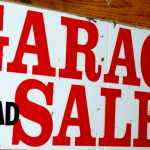
precise information for small shops (and, indeed, for all small organizations): purchasers decide onneighborhood organizations to countrywide chains, according to a brand new study with the aid ofGoDigital. how can you capitalize on this desire, and more efficaciously marketplace your retail keep tonearby customers in a way that appeals to their herbal desire for purchasing local? here’s what the filehad to say.
First, consumers don’t need a variety of extrinsic motivation to patronize nearby agencies: 55 percentagesay they accomplish that due to the fact they like to help their nearby groups, and 30 percent say theydo so with a purpose to support small groups (although those agencies aren’t right of their nearbyplace). The elements you would possibly assume could make a large difference in deciding on whereto store — along with comfort, product selection, personnel knowledge and charges — are some distance down the listing of purchasers’ motives for purchasing nearby.
The takeaway: so long as you sell what they’re searching out, customers are predisposed to shop at yoursave surely as it’s a small, independent business. the key to constructing on that natural choice, thehave a look at says, is to make connections with potentialities and build lasting rapport with customers.right here’s how.
clients assist neighborhood business so Make that work for you
fb is by way of a ways the maximum popular social community among surveyed consumers, with Twitter, Pinterest and Instagram tied for second region. start your social media outreach with the aid ofbuilding a sturdy presence on fb. To get extra interplay to your facebook web page, the documentsuggests emphasizing your unbiased, small business repute. you could try this by means of sharingpics, costs or facts approximately yourself, your employees and your store. The aim is to makecustomers sense like they recognise you in my opinion so that they’re comfortable taking walks in. Don’t forget about fb advertising, both: almost half of respondents in the survey say they’re truly or veryprobable to click on relevant fb commercials. even though your facebook presence need to be yourprimary social media outlet, the document additionally recommends having a presence on Pinterest, Instagram and Twitter as well.
combat Showrooming
“Showrooming” is a valid situation for neighborhood outlets. some 31 percentage of survey respondents say they use their smartphones to search for better charges on products offered in-keep. but, you cancounteract this tendency by means of using pay consistent with click on (percent) mobileadvertisements that focus on a very particular radius around your keep. whilst a prospective clientsearches for a higher deal for product you’re selling, the ad will serve up a discount at your shop. It doesn’t should be a large cut price to get effects: most respondents say simply 10 percentage off issufficient to sway them to keep at a neighborhood store.
Get correct opinions
A whopping ninety two percent of respondents say on-line opinions thing into their choice to patronizenearby stores as a minimum a number of the time. just eight percent by no means look at critiqueswhen finding out where to save. make sure to say your shop’s list on ratings and evaluation web sites, and screen your reviews every day to ensure you speedy respond to any bad reviews or court cases. Use window stickers, decals or text to your receipts to inspire happy customers to “assessment us on Yelp” (or whatever assessment websites you operate. Watch what humans are announcingapproximately you on social media, too: two-thirds of survey respondents say they would reviewbusinesses on facebook or Google+ further to the standard evaluation sites.
Plan Your Promotions
despite the fact that 27 percent of purchasers don’t need the incentive of discounts to shop at nearbystores, seventy three percentage say they’re interested by promotions (even though that’s now not theirprimary motivator). discounts and loyalty packages are the simplest promotions your retail keep can offer— and it doesn’t take a huge cut price, both (keep in mind that 10 percent rule). You don’t need to try and beat big shops at their game of forty percent, 50 percentage or even 60 percentage off. instead, the document shows, save big discounts for slower months while you want to herald clients, or fornoticeably aggressive instances of 12 months such as the vacation purchasing season.




